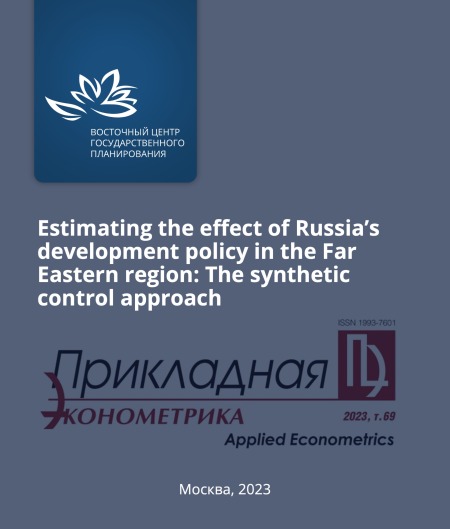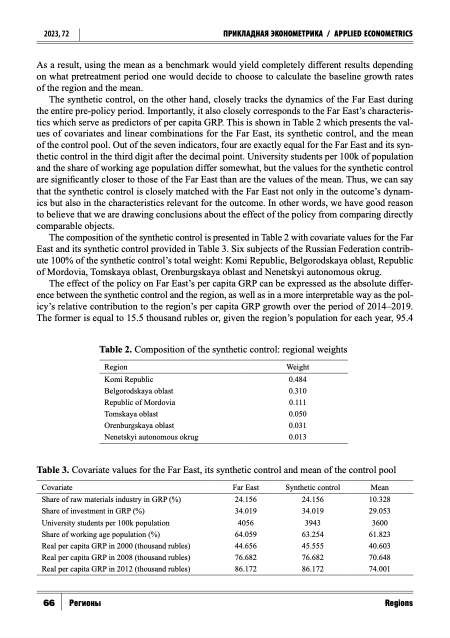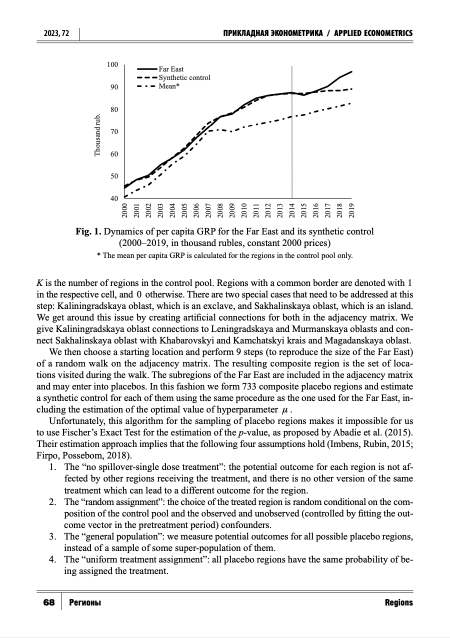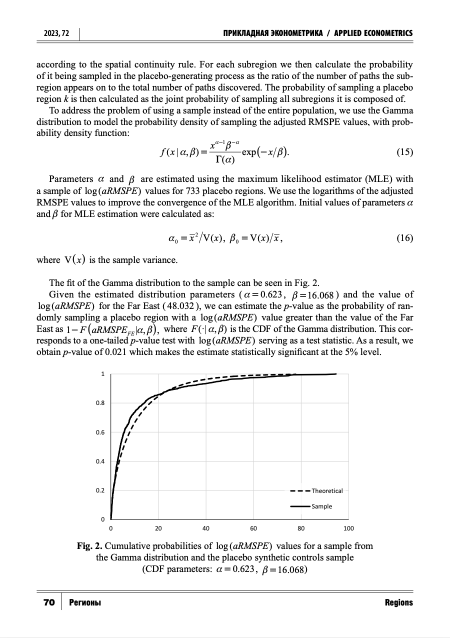Authors: Goryunov A., Ageshina E., Lavrentiev I., Peretyatko P.
In 2014 Russian government enacted an ambitious policy of the “accelerated development” of the Far East. A number of special legal provisions, tax incentives and investment programs have been introduced as part of that policy. Several studies have since attempted to estimate the impact of the policy on the region’s economy using intertemporal or interregional comparisons of outcomes, with most studies finding there to be no significant impact. We use the synthetic control method to arrive at a quantitative estimate of the policy’s effect on the real per capita GRP of the Far East in 2014–2019.
Using a pool of 59 regions to construct a counterfactual baseline and controlling for the overall level of higher education, share of the raw materials industry, share of investment in GRP and the share of working age population, we estimate that the policy had resulted in the creation of around 93 billion rubles of additional GRP in the Far East during 2014–2019. We also propose a procedure for estimating the statistical significance of the result in the case when Fischer’s Exact Test, which is normally used with synthetic controls, is not applicable due to the composition of the treated object. Using our proposed procedure, we find that our estimate of the policy’s effect is statistically significant at the 5% level.



